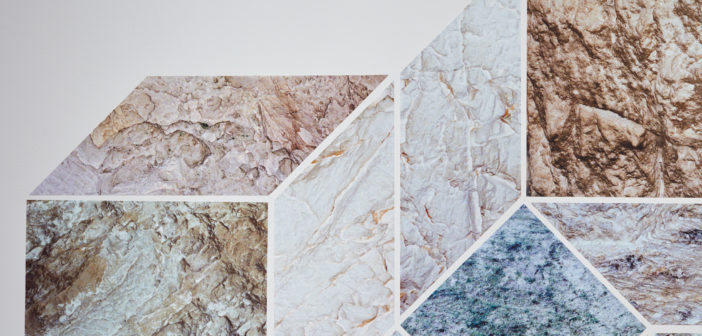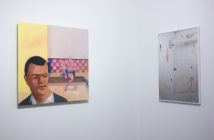I remember many discussions from my time in art school about the “conventions of the gallery” and it’ white-walled, white-pedestalled attempts at non-architecture. With this consideration, the “white cube,” it is perhaps an odd choice for a show about architecture. On the other hand, it could be the most natural place as if the supposed blank slate were the only way to look at the history and forms of architectures past would be to negate the architecture currently inhabited.
In On the Wall: Assaf Evron at Providence College, Evron takes on the space of the gallery and its conceits head on. The exhibition is paired with a display of historical photos, recently acquired by the college, of sites in what is now Israel. Evron studied in and continues to live in Israel. His work draws directly on the architectural history of the region presented in this sister show. The geometric patterns applied to the walls are photographs Evron took while visiting the region’s quarries. The tiled, vinyl artworks attempt to balance both the architecture of the past with the sterile cliche of the white cube gallery space.
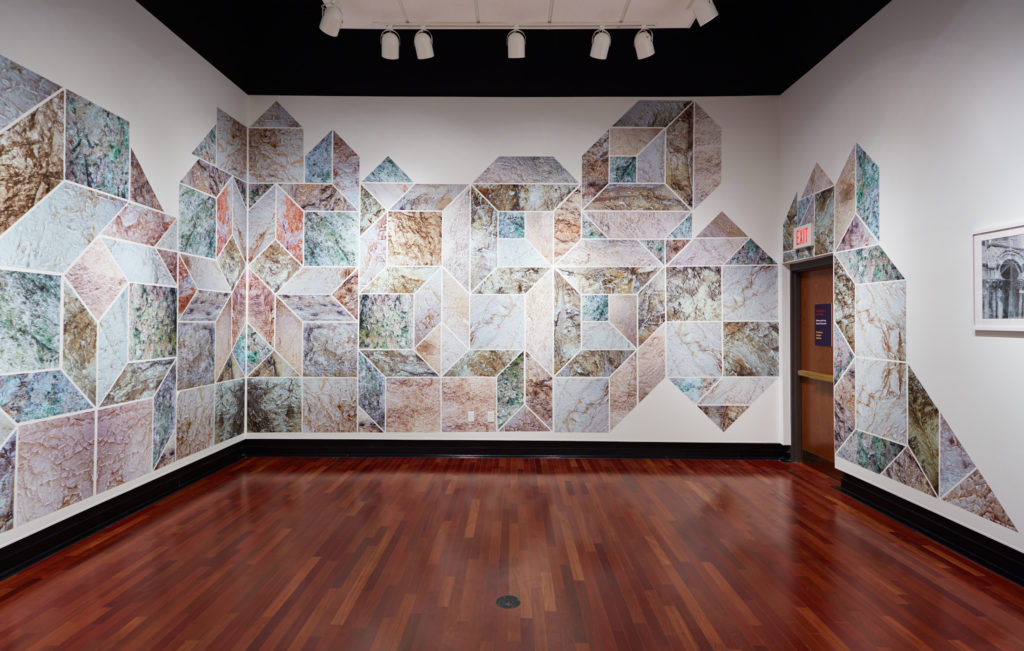
On the Wall: Assaf Evron and Marking the Sacred, Providence College Galleries, April 26 - July 30, 2017. Photo: Erik Gould.
Wrapping from a left side back wall, and reaching around across an exit to the right wall, the geometric patterns buck, swelling by the historical photos hung in pristine white frames. Their marble textures have lost in translation the luminosity and depth that they have been prized for throughout the ages. In flat repetition, they create an optical illusion; some shapes slip away into the wall, while others appear to protrude towards the viewer. This effect of displacement calls into question the link between the photos on the wall, the story of the patterns origins in the same quarries and carries it into a larger picture. The decorative tiled surface of the wall is not one bound by place and time. These shapes, colors, textures, and patterns splashed on the wall are ones that are familiar to anyone, certainly to those who have traveled to Italy’s great Renaissance sites, but also to anyone who has visited their state capital, historic libraries and other American buildings built in the Neo-Classical style, a style eagerly piggybacking on the traditions of the empires and cultures our young country strove to simulate and exemplify.
Evron’s two-dimensional installation was informed by and formed based on a place with deep and lasting connections to today’s culture, not merely through the export of stone, building techniques, and styles. The flat images on the flat, white walls, placed in connection to the photographs of places wracked by time, are an odd sort of time machine. It is almost too easy to relate the two images of stone. Evron’s work also brings to mind the cheap contact paper that once lined the kitchen cabinets of my grandmother's cupboards, a strange place to contemplate alongside some of the world’s most precious holy sites.
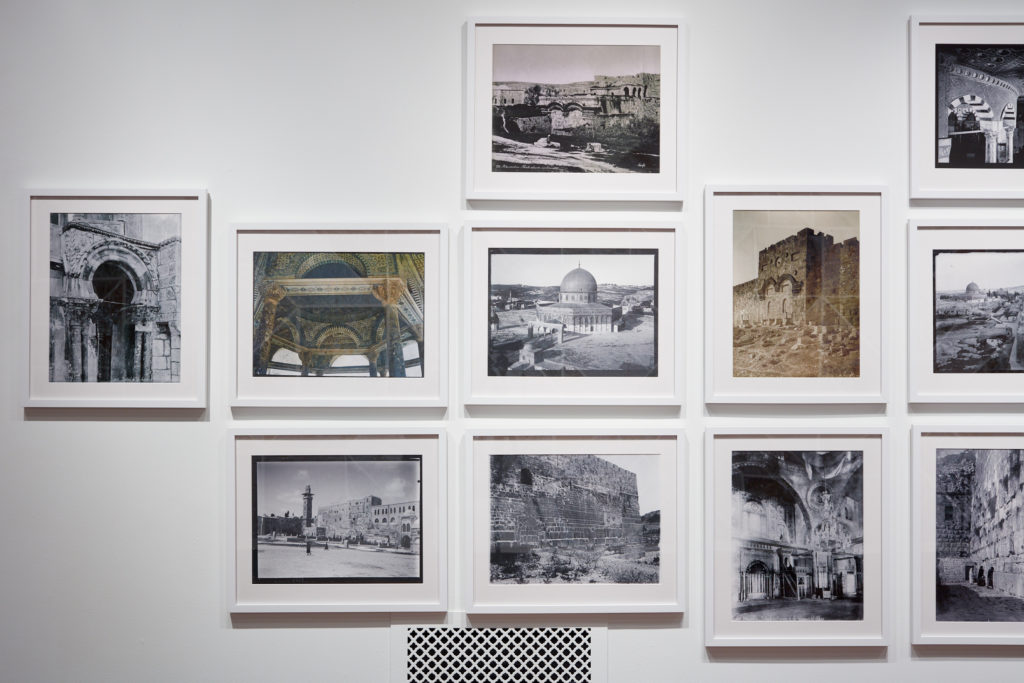
Marking the Sacred: The Temple Mount/Haram Al-Sharif in Jerusalem, Providence College Galleries, April 26 - July 30, 2017. Photo: Erik Gould.
The work seeks to be immersive in its scale and it’s story, but its patterns, its referents and its constant adherence to the rules of the gallery (the work never breaks the grid set forth by the edges of the gallery wall, it is always a safe distance from any edge, above or below) keep pushing me away. Evron’s apparent love for the history of architecture has brought a contemporary voice to an ancient story but it may have also blinded him to questions of the walls he was given.
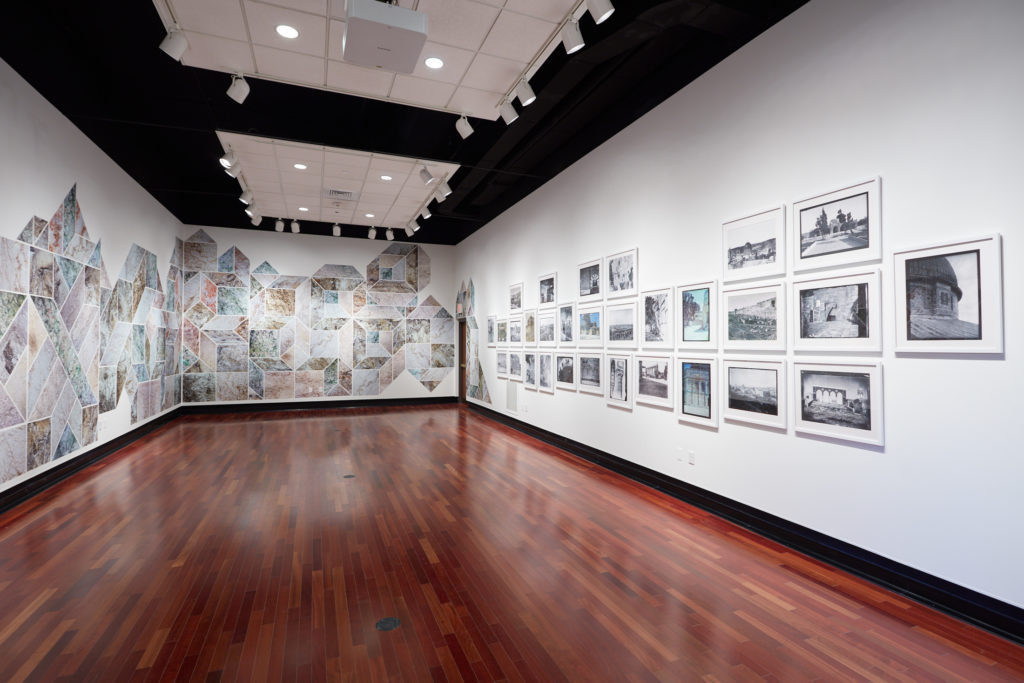
On the Wall: Assaf Evron and Marking the Sacred, Providence College Galleries, April 26 - July 30, 2017. Photo: Erik Gould.
On the Wall: Assaf Evron is on view at Reily Gallery at Providence College’s Smith Center for the Arts, now through July 30th.

